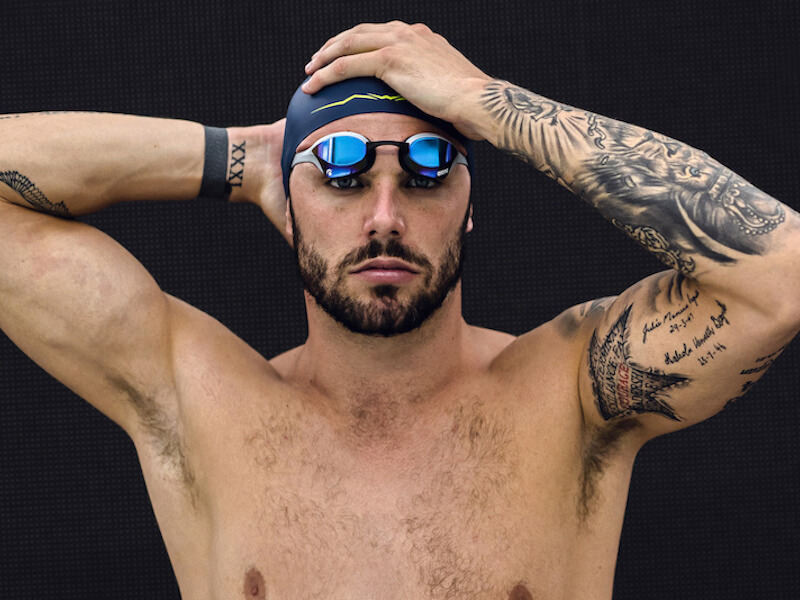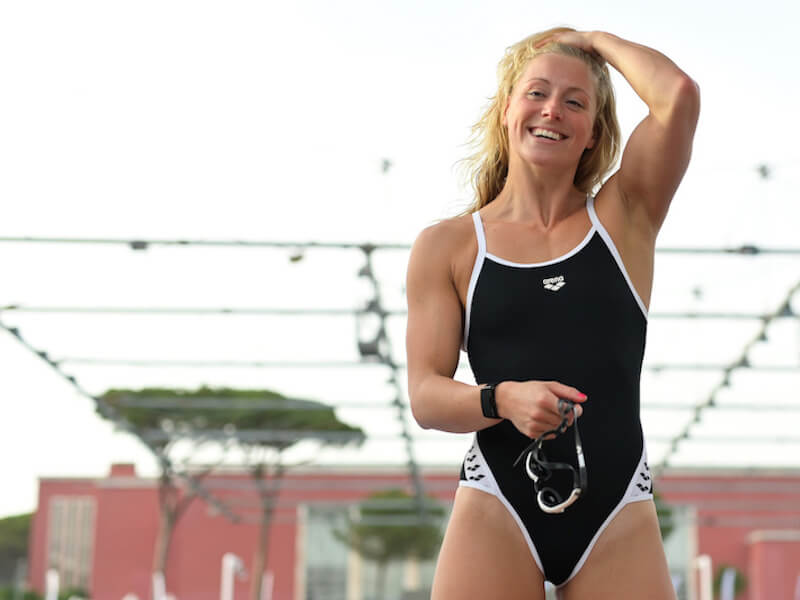Don’t Let Swimmer’s Headache Slow You Down
For most of us, swimming is a hobby, and for some of us, it’s a serious exertional sport that becomes a full-time career. If you swim for fun or for money, one thing is certain, swimmer’s headache is an unpleasant experience that can affect your performance and enjoyment.
Are you new to swimming and have discovered that you suffer from swimmer’s headache? Or are you a veteran competitive swimmer that has suddenly found themselves dealing with unwanted pains during training sessions? Whichever category of swimming you fit into, all hope is not lost. There are steps you can take to enjoy pain-free swimming once again.
In this article, we will explain the different types of swimmer’s headache and what causes them. Then, we’ll look at what you can do to alleviate the risk of having to deal with headaches when you’re trying to enjoy your swim. We will even point you in the right direction of swim equipment that could make your swimmer’s headache a thing of the past.
Types of Swimmer’s Headache

You may have heard about the dreaded swimmer’s headache at the poolside. But, did you know there are actually many different types of swimmer’s headache? Let’s take a look at the causes, symptoms, and cures of each headache type.
Keep in mind, you should always consult a physician before making any health-related decisions.
Supraorbital Neuralgia
Supraorbital neuralgia often occurs because of ill-fitting swimming goggles or swim caps, or even the makeup of your facial anatomy. This type of swimmer’s headache results in a spasming or constant pain in the forehead. You may also experience tingling or numbness.
Supraorbital neuralgia can be cured by simply changing the way you wear your goggles. Play around with where you place the strap and how tight you wear your swimming goggles. If that doesn’t help, you may have to purchase a better pair. Look for goggles with soft rubber gaskets for a more comfortable fit.
If supraorbital neuralgia continues despite trying everything with your goggles and swim cap, you will have to see your doctor, who may recommend a nerve ablation or aesthetic nerve blockade.
Swimmer’s Ear
A headache can also be a primary symptom of swimmer’s ear. Swimmer’s ear is an ear infection caused by bacteria in the outer ear canal. Other symptoms include jaw pain, ear pain, itching, and excessive fluid in the ears.
Prevention is better than having to seek a cure, and swimmer’s ear is no exception. If you have suffered from swimmer’s ear in the past or just want to avoid it altogether, get yourself a decent pair of ear plugs to reduce your risk.
If you are already suffering from swimmer’s ear, visit your doctor. Chances are they will prescribe you antibiotic ear drops.
External Compression Headache
This type of swimmer’s headache is similar to supraorbital neuralgia in its causes, but there are fewer symptoms. As the name suggests, an external compression headache is caused by overly tight swimming goggles, an ill-fitting swim cap, or a combination of both.
The pain of this type of swimmer’s headache is constant and will be felt wherever the offending article is applying excess pressure. The cure is simple: Remove the offending article. The pain should subside, and no medication will be needed. The worst case scenario here is that it could develop into a more severe headache known as a migraine in some cases.
Tension Headache
Tension headaches are more common for swimmers that avoid chlorinated water and seek their aquatic pleasures outside. If you find yourself with a dull headache alongside some tightness or pressure around the forehead area after a long bout of physical activity in open water, you probably have a tension headache and don’t have too much to worry about.
These types of swimmer’s headaches are not caused by swimming itself. It’s other lifestyle factors, such as dehydration, sunlight, heat, and not getting enough calories. These headaches should be the least of your worries and the pain is usually manageable without using medication. If you do feel you need pain medication though, over-the-counter brands should do the job.
If these headaches become a regular problem, even once you have corrected the lifestyle choices that may have caused them, you want to see a doctor. With tension headaches and all the headaches listed above, it’s always worth ruling out that your headaches aren’t related to a health problem.
Sinusitis
A sinus headache is easy to spot, as the pain is felt in the head as well as the face. You may feel a constant throbbing pain in your forehead, cheekbones, and behind the bridge of your nose. A sinus headache also gets worse when you move your head around, lie down, or bend over.
This type of headache is experienced by people that regularly swim in the chlorinated water of a swimming pool. The swimmer’s nasal cavities become inflamed by the regular exposure to chlorine. It can also be an issue for skin divers and open-water swimmers since it can also be caused by changes in pressure and bacteria.
The pain can be dulled with over-the-counter pain relief. But it’s a better idea to cure your pain by clearing your nasal passages with nose sprays. An even better solution is to prevent the cause and start wearing a nose clip.
Primary Exercise Headache
As much as competitive swimmers will hate to hear this, excessive exercise or overtraining can cause headaches. These types of headaches occur after a tough swim workout and can last up to 48 hours.
Primary exercise headaches are more common in men than women. They can be treated with a nonsteroidal anti-inflammatory medication.
Swim Equipment to Prevent Swimmer’s Headaches

Prevention before cure is a great ethos when thinking about our long-term healthcare. Even though we exercise to generally do us good, any repetitive physical activity has the potential to do us harm too. Let’s have a look at swim gear that can reduce the chances of experiencing a swimmer’s headache.
Swimears
If you’re prone to swimmer’s ear, using a pair of Swimears can prevent water from entering your ear canal. This product is a collaborative effort between SwimEars and arena. Relying on the experience of both companies, you can protect your ears without affecting your hearing or balance.
Swimears also come with changeable gels ranging in size from extra small to large, so that you can enjoy a secure fit.
Air-Bold Swipe Goggles
These goggles have become known as the most comfortable swim goggles ever designed, making them the perfect choice for those suffering with supraorbital neuralgia or external compression headaches. They feature arena’s innovative air seal gaskets, which compress and adapt to the eye socket with their unique honeycomb structure.
Air-Bold Swipe Goggles offer a swimmer exactly what they need — such as the ability to see clearly in and out of the water and to keep chlorine out — all without even feeling that they’re on your face.
Swim Caps and Nose Plugs
To minimize unwanted tension on your head, an ergonomic wrinkle-free swim cap, such as arena’s Logo Moulded Silicone Cap, will serve you well.
For those suffering with regular sinusitis, the Nose Clip Pro II is a soft solution that prevents water and chlorine from entering your nasal passage.
Don’t Let Swimmer’s Headaches Take the Fun Out of Swimming

Whether swimming is your hobby or your profession, don’t let a headache ruin your time in and out of the pool. We all want our training to be distraction-free and enjoyable. One way to achieve this is by understanding which type of headache you experience and how to prevent it. But if your headaches persist, consult a physician.
Take a look at arena’s online store to find a large array of swim equipment to keep you swimming without headaches.
Written by:
Thomas Board
Tom is an outdoor and adventure travel writer and full-time firefighter based in Leeds, UK. He spends his free time summiting the mountains of Wales and wild swimming in the lakes of Snowdonia all year round.







